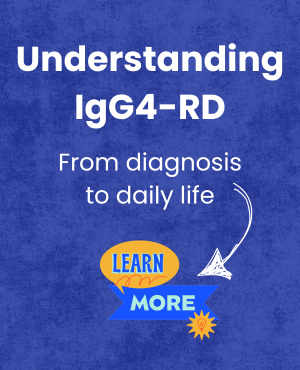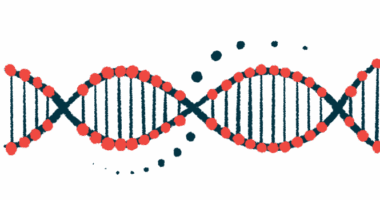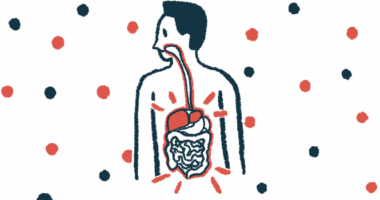IgG4 levels shape autoimmune pancreatitis, study finds
Researchers urge comprehensive assessment in type 1 AIP

Type 1 autoimmune pancreatitis (AIP), a type of IgG4-related disease (IgG4-RD) involving the pancreas, can look different depending on the levels of immunoglobulin G4 (IgG4), a study found.
People with normal IgG4 levels typically had more limited damage in the pancreas and some issues outside it, the researchers found. Those with high IgG4 levels tended to have more widespread inflammation in the pancreas. Because of this, AIP can be harder to diagnose in people with normal IgG4 levels, which sometimes leads to unnecessary surgery or other interventions.
The study also showed that the chances of the disease recurring were similar in both groups. This suggests that “a comprehensive assessment that considers the long-term clinical course is essential regardless of IgG4 status,” the researchers wrote.
The study, “Clinicopathological features of type 1 autoimmune pancreatitis without elevated serum IgG4 level,” was published in Scientific Reports.
IgG4-RD is caused when the immune system infiltrates tissues with IgG4-positive antibody-producing B-cells, or plasma cells, often leading to tumor-like masses in one or more organs. IgG4-RD symptoms vary widely depending on the organs involved. Treatment for the chronic condition typically involves glucocorticoids, which help reduce immune system activity and relieve symptoms.
Diagnosis complicated by normal IgG4 levels
Type 1 AIP causes inflammation and scarring in the pancreas, an organ that helps with digestion and blood sugar control. Common signs include pancreatic enlargement and narrowing of the main pancreatic duct (MPD), which drains digestive enzymes. If the bile ducts become inflamed or compressed, bile may back up into the liver and cause jaundice (yellowing of the skin and whites of the eyes).
Diagnosing IgG4-RD generally and AIP specifically requires assessing a variety of clinical tests and imaging results. Testing for IgG4 in the blood (serum) is one part of this process. “However, in some cases of AIP, serum IgG4 levels are not elevated, which poses diagnostic challenges,” the team wrote.
To better understand features of IgG4-negative AIP, the researchers recruited 301 participants with a definite or probable AIP diagnosis. Their average age at diagnosis was 69, and about 83% were men. Twenty of the participants had IgG4-negative blood tests, while the rest had elevated IgG4. Follow-up lasted a median of 58 months (nearly five years) after diagnosis.
Beyond differences in IgG4 levels, the two groups had differences in the type of damage in the pancreas. Most participants with IgG4-negative AIP (90%) had narrowing of the MPD in short segments or concentrated, focal areas. A significantly greater proportion of the IgG4-positive group had narrowing throughout more of the MPD or in multiple locations.
Similar patterns emerged in pancreatic enlargement. IgG4-positive participants showed more widespread effects, but the difference between the groups didn’t reach statistical significance. IgG4-positive participants also had significantly higher rates of jaundice. “These results suggest a possible correlation between serum IgG4 levels and the extent of pancreatic inflammation,” the researchers wrote.
Retroperitoneal fibrosis, or scarring in the area behind the abdominal lining, was significantly more common in the IgG4-negative group. The presence of extra-pancreatic lesions, especially retroperitoneal fibrosis, may help diagnose AIP in those without elevated levels of IgG4, according to the team.
Treatment approaches also varied between the two groups, with IgG4-negative participants significantly less likely to start on glucocorticoid therapy but significantly more likely to undergo surgery. Surgery is not typically a first-line treatment for AIP, but is common in pancreatic cancer treatment. Shared features between the two conditions could have led to mistaken or unclear diagnosis, the researchers said. “Most of the patients who underwent surgery showed focal pancreatic enlargement or focal narrowing of the MPD, suggesting that surgery was performed due to difficulty distinguishing these cases from pancreatic cancer,” they wrote.
About 30% of participants in both groups experienced relapses during the follow-up period after diagnosis. The relapse site and whether the patient was on glucocorticoid therapy didn’t differ significantly between the groups. “Serum IgG4 level at the time of diagnosis alone may not accurately reflect disease activity or relapse risk,” the team noted.
The researchers also examined 22 people with a possible but unconfirmed diagnosis of AIP. None had lesions outside of the pancreas, and all received glucocorticoids, both to ease symptoms and to potentially aid in diagnosis; a positive response to the medication could help identify potential problems. The relapse rate was lower in this group at about 18%.
The study’s results may help clinicians identify unusual cases of IgG4-negative AIP, the researchers said. “To avoid misdiagnosis of pancreatic tumors and unnecessary surgery, these findings should be taken into consideration, and [disease-specific] examinations should be performed to obtain an appropriate diagnosis,” they wrote. “Additionally, patients diagnosed as “possible” may require careful follow-up, similar to other AIP patients.”







